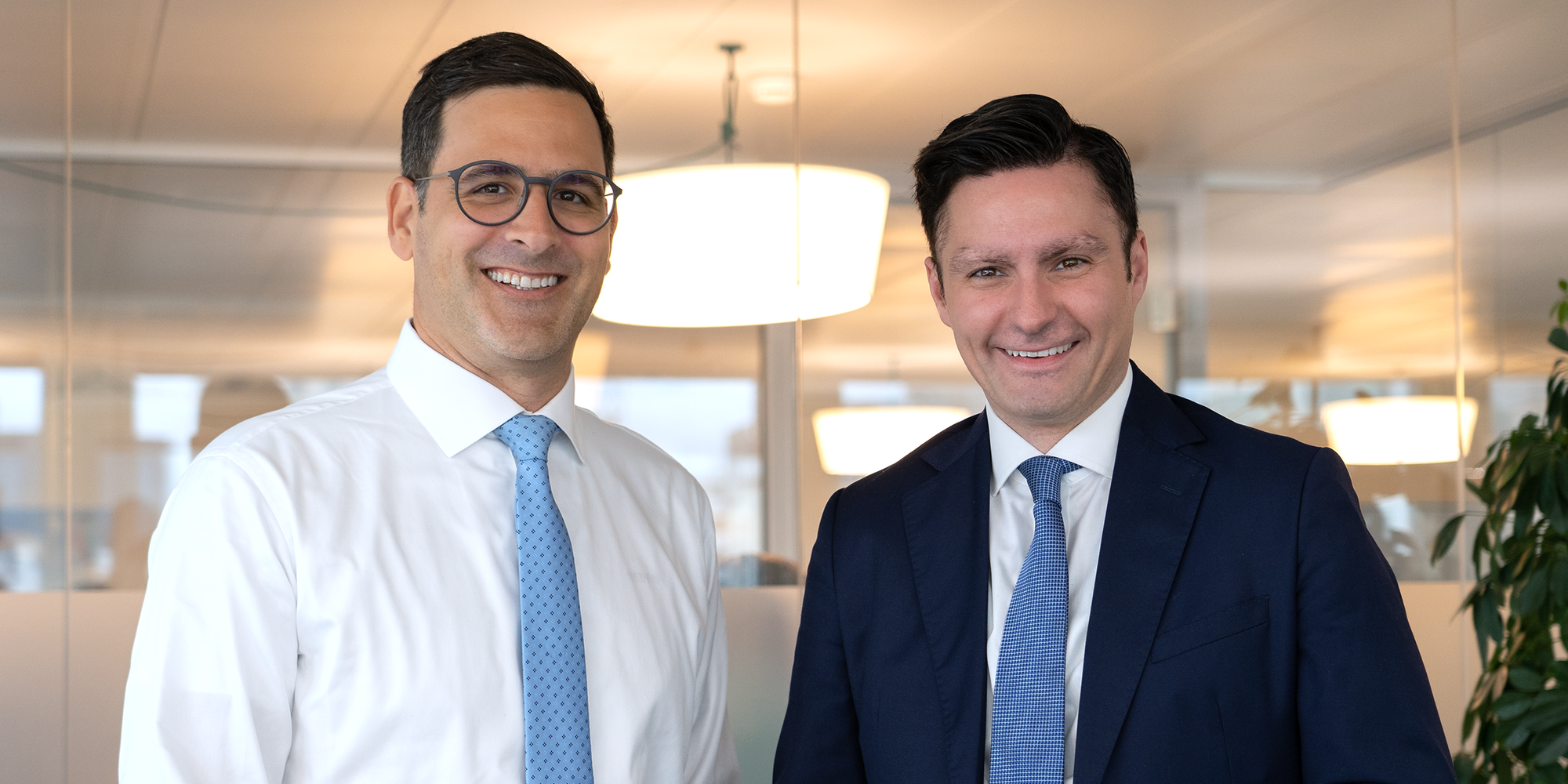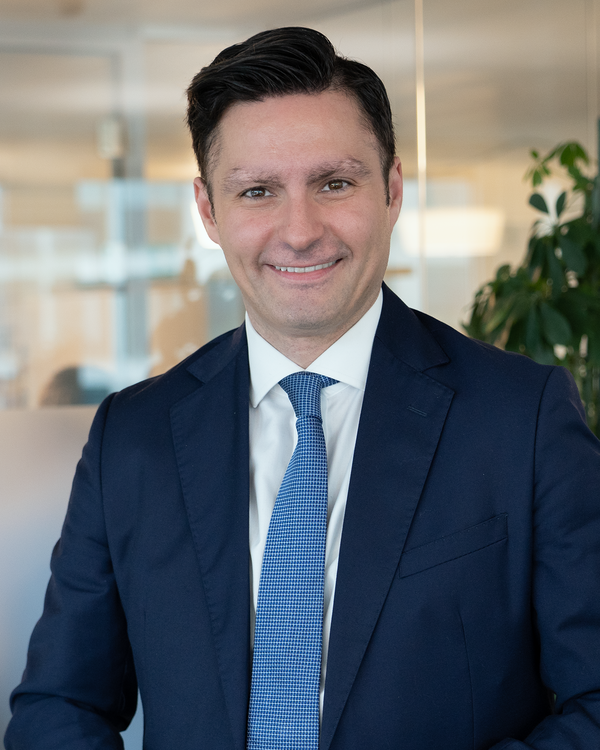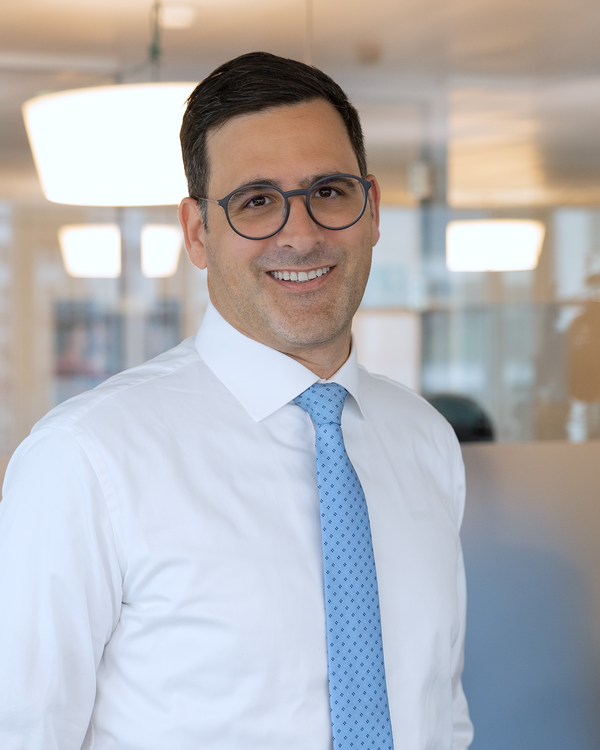Sustainable investment requires active dialogue
Investment stewardship is a hot topic right now. But what does this term mean? And can it change the world for the better? Our sustainability specialists Fabio Pellizzari and Rocchino Contangelo provide answers.
Interview with Fabio Pellizzari and Rocchino Contangelo

Investment stewardship is an integral part of our sustainability strategy. It includes dialogue with companies (engagement) and the exercise of voting rights. Engagement and voting are used in both active and passive Swisscanto investment funds. Zürcher Kantonalbank's Asset Management recently published the "Active Ownership Report" on this topic. It contains extensive information about our activities.
The more voting rights an individual investor can bring together for long-term goals, the more effective their voting power becomes. That is why we participate in global engagement initiatives such as Climate Action 100+, Task Force on Climate-related Financial Disclosures (TCFD) and the Climate Bond Initiative. We also recently joined the Forum pour l'Investissement Responsable (FIR). The investors' association based in France supports investors in encouraging publicly traded French companies to increase their climate protection efforts and transparency.
Fabio, how does the engagement of Zürcher Kantonalbank's Asset Management affect the companies' sustainability agenda?
Fabio: We are in direct dialogue with 100 to 200 Swiss companies. An initial meeting is held, followed by various follow-up meetings in which objectives are defined and their implementation tracked. In discussions with the management and the Board of Directors, we address any UN Global Compact violations, set CO2 reduction targets or address issues of good corporate governance. If a dialogue is unsuccessful in the medium to long term, we consider dismissing members of the Board of Directors by exercising voting rights, rejecting remuneration proposals or not granting discharge. Moreover, no further capital can be added to the company or the equity portion in the portfolio can be underweighted and ultimately sold as the last resort. Finally, we have defined a CO2 reduction path for our sustainable investment funds, to which we are committed.
How do we communicate with foreign companies?
Fabio: We sometimes delegate engagement and voting activities to renowned partners such as Sustainalytics. Sustainalytics conducts dialogue with top management at over 300 globally active companies on our behalf. Where necessary or appropriate, Zürcher Kantonalbank's Asset Management supports investor initiatives on ESG issues as part of its memberships and thus participates in collaborative engagements.

Investment stewardship contributes to mitigating potential financial risks for our investors caused, for example, by climate change.
Rocchino Contangelo, Head Global ESG integrated Research at Zürcher Kantonalbank Asset Management
Rocchino, your team conducts engagement discussions with Swiss issuers. Can you tell us some success stories?
Rocchino: We have been in contact with Holcim's management team for several years. The cement company is considered the largest emitter of CO2 in this country. Thanks to our engagement and that of other investors, Holcim has committed to an ambitious decarbonisation strategy, the Science Based Targets Initiative (SBTi) and carbon neutrality.
We have been in contact with Gurit, a supplier to the wind power industry, regarding its sustainability reporting. Especially since Gurit products are highly sustainable, we were able to convince the company of the benefits of comprehensive sustainability reporting. Thanks to the disclosure of ESG aspects, Gurit enhanced its ESG rating with a respected ESG rating provider. Gurit has thus become more attractive to investors.
We have been holding regular engagement discussions with Volkswagen since 2019. The first discussions focused on increased awareness of electric vehicles and decarbonisation strategies in the mobility sector. Thanks in part to our engagement, the car manufacturer also defined ambitious emissions reduction targets. In September 2020, VW received confirmation from SBTi that the group's climate targets meet the prerequisites for limiting global warming to "significantly below 2 degrees Celsius."
Our Active Ownership Report lists even more specific examples.
What is the key to successful dialogue?
Rocchino: Our research capacities enable us to better understand business models and industries. In this context, we continuously publish theme assessments on topics such as carbon pricing, electromobility or cleantech. We "dissect" companies and countries according to a total of 46 ESG criteria and compare them with the industry. The ESG assessment is carried out holistically. If a company performs below average in one dimension, for example with regard to the "G", this is not yet a reason for a sale or exclusion per se. Rather, we attempt to identify and rectify defects as part of our engagement and voting activities.
Suppose a company has a very poor ESG score. What happens next?
Rocchino: If companies score far below average in terms of the overall ESG score compared to their peer group, a sale is indicated or we may refrain from investing.
However, I would like to emphasise that avoiding problems by selling securities is not a very effective tool. Instead, we try to stay invested and encourage companies to adopt more sustainable practices through our investment stewardship activities. Companies should also seek dialogue transparently via ESG reports and actively with ESG data providers. Having said that, any companies that lobby against the existence of climate change are completely removed from the portfolio over time.
To what extent does the integration of ESG criteria into the investment process actually benefit investors?
Rocchino: Investment stewardship contributes to mitigating potential financial risks for our investors caused, for example, by climate change. At the same time, we are potentially increasing the chances for companies to develop and expand sustainable business models. Investors should also benefit from this in the medium to long term.

Sustainable, economic development requires a transition phase with a corresponding change in technology.
Fabio Pellizzari, Head ESG Strategy and Development at Zürcher Kantonalbank Asset Management
Fabio, why are we even invested in controversial securities such as Holcim as part of the funds in the Responsible product line?
Fabio: Whether concrete really is controversial, is an open question. The buildings in which we live and work consist largely of the CO2-intensive building materials cement, steel and glass. Things are difficult without a roof over your head. The same applies to a portfolio. Sustainable, economic development requires a transition phase with a corresponding change in technology. One example here is recycled concrete, as used in the Letzigrund Stadium, for example. The Responsible product line focuses precisely on the transition to a sustainable economy. A fundamental exclusion of the company from Responsible products would be counterproductive.
Why is that? If companies receive no or too little capital, are they not forced to align themselves with sustainability?
Fabio: In theory, this may be the case, but in practice, such companies raise capital from investors who place less emphasis on sustainability. For this reason, it is more pragmatic and therefore also more expedient if we maintain continuous dialogue about sustainability goals and use our voting power for this purpose. In 2022, we voted against management's recommendations in around 15 percent of the agenda items. Our voting behaviour is publicly viewable. Ultimately, it is about demonstrating the benefits of sustainability for investors, companies and society as a whole.
Nevertheless, many retail customers have a sustainable concept in mind when they choose to invest sustainably. They may be irritated if, for example, cement manufacturers or petroleum companies are included in a "responsible" portfolio.
Fabio: Converting existing, traditional business models into sustainable business models is technically complex and therefore costly and time-consuming. Devising low-CO2e or carbon-neutral products and services requires research and development, which has to be funded. Scaling these sustainable business models also requires time and money. Some of the financing must come from the sale of conventional products and services. The latter cannot be avoided in any case. This is because products such as conventionally produced building materials cannot quickly be substituted in the required quantity at economically justifiable costs for CO2-neutral alternatives. There is often a lack of understanding for this comprehensive and complex transition. But it is important that large corporations succeed in the transition.
Responsible and Sustainable funds in brief
Our active funds in the "Responsible" product line are based on the reduction path of the Paris Agreement as standard. The CO2e-reduction target in the actively managed Responsible funds with traditional investments is at least four percent per year. Investments are made in companies and countries that do not violate any exclusion criteria and whose ESG performance we have analysed. In the Responsible funds, we take into account companies whose goal is to make the transition from a conventional to a sustainable business model.
The same criteria apply to the Sustainable funds as to the Responsible funds. In addition, we only take into account companies whose products or services have a positive impact on at least one UN Sustainable Development Goal (SDG leaders) or companies that score above average in terms of the ESG assessment (ESG leaders). The "Sustainable" product line (with the exception of the thematic funds) is geared towards the ambitious limitation of global warming to 1.5 degrees by the year 2100 and has set itself the goal of reducing CO2e emissions by at least seven percent per year.
Rocchino, to conclude, how do Swisscanto fund managers and Asset Management interact when voting?
Rocchino: The two fund management companies, Swisscanto Fund Management Company Ltd. and Swisscanto Asset Management International S.A., are the owners of the fund holdings. Under their fiduciary duty to investors, they are obliged to actively exercise the voting rights on the equity holdings. Voting behaviour is aligned with proprietary, ESG best practice-oriented voting guidelines, on the basis of which an independent voting rights consultant prepares a voting recommendation before each annual general meeting. Zürcher Kantonalbank's Legal & Compliance department reviews these voting recommendations in consideration of the guidelines. However, if Zürcher Kantonalbank's Asset Management comes to the conclusion that a different vote should be taken in the interest of investors, it submits a change request via Legal & Compliance to the fund management companies, which ultimately decide on the request.

